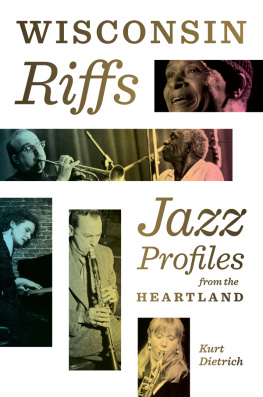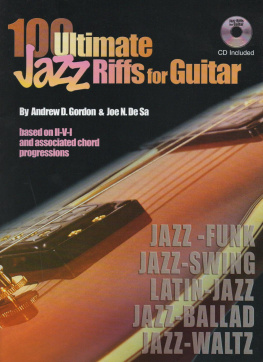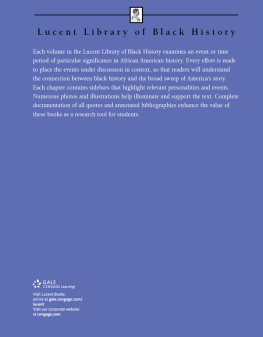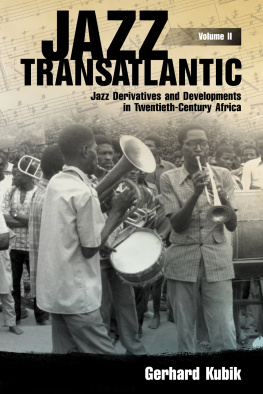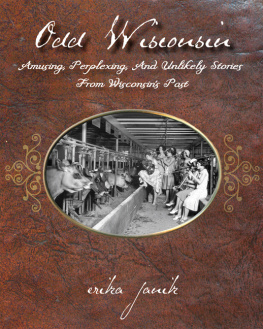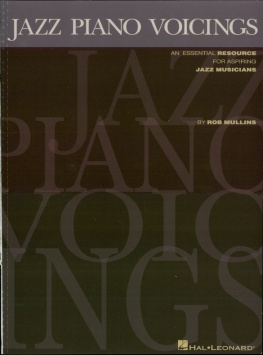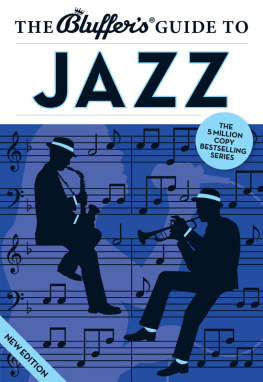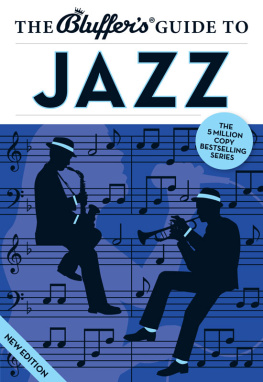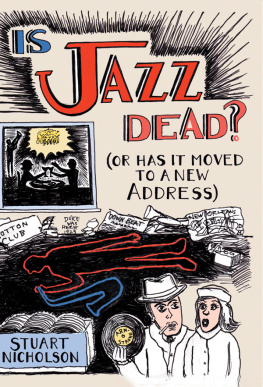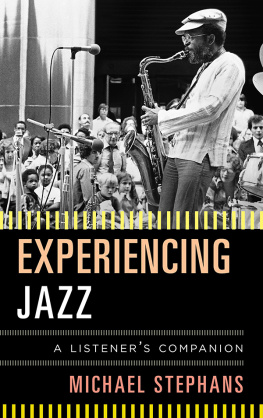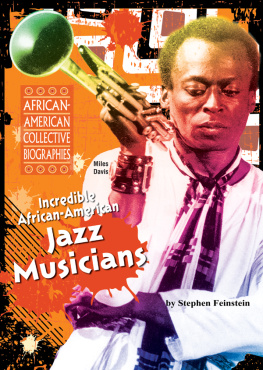Wisconsin Riffs

Published by the Wisconsin Historical Society Press
Publishers since 1855
The Wisconsin Historical Society helps people connect to the past by collecting, preserving, and sharing stories. Founded in 1846, the Society is one of the nations finest historical institutions.
Join the Wisconsin Historical Society: wisconsinhistory.org/membership
2018 by Kurt Dietrich
E-book edition 2018
For permission to reuse material from Wisconsin Riffs: Jazz Profiles from the Heartland (ISBN 978-0-87020-853-9; e-book ISBN 978-0-87020-854-6), please access www.copyright.com or contact the Copyright Clearance Center, Inc. (CCC), 222 Rosewood Drive, Danvers, MA 01923, 978-750-8400. CCC is a not-for-profit organization that provides licenses and registration for a variety of users.
Front cover photos (top to bottom): Al Jarreau, courtesy of Ripon College; Brian Lynch and Art Blakey, photo by Teri Bloom; Lynne Arriale, photo by Jean Marc Lubrano; Woody Herman, courtesy of the William P. Gottlieb/Ira and Leonore S. Gershwin Fund Collection, Music Division, Library of Congress; and Sue Orfield, photo by Joel Christopherson. Back cover photos (left to right): Joe Sanders, Hamza Djenat; Wisconsin Conservatory faculty (left to right): Eddie Baker, Manty Ellis, Jessie Hauck, Berkeley Fudge, Jeff Pietrangelo, Scott Preston (student), and Reggie Willis, courtesy of the Wisconsin Conservatory of Music; and Ben Sidran, photo by Jordan Makow. Front flap photo: Kelly and Doc De Haven, photo by Bill Fritsch.
Cover design by Percolator Graphic Design
Interior Typesetting by Integrated Composition Systems
22 21 20 19 18 1 2 3 4 5
Library of Congress Cataloging-in-Publication Data
Names: Dietrich, Kurt author.
Title: Wisconsin riffs : jazz portraits from the heartland / Kurt Dietrich.
Description: Madison : Wisconsin Historical Society Press, 2018. | Includes bibliographical references and index. |
Identifiers: LCCN 2017042188 (print) | LCCN 2017042750 (ebook) | ISBN 9780870208546 (E-book) | ISBN 9780870208539 (hardcover : alk. paper)
Subjects: LCSH: JazzWisconsinHistory and criticism. | Jazz musiciansWisconsin.
Classification: LCC ML3508.7.W6 (ebook) | LCC ML3508.7.W6 D54 2018 (print) | DDC 781.6509775dc23
LC record available at https://lccn.loc.gov/2017042188
CONTENTS
When I started work on this book, it was my intention to write a history of jazz in Wisconsin. Having previously written two books and a number of articles on jazz history, I was under no illusions that history, especially jazz history, is neat and clean. Despite what some revisionists would have us believe, a music, particularly one as rich and diverse as jazz, by no means evolves in a straight stylistic or chronological line. Also, there is considerable disagreement today about what music should (and should not) be considered as jazz.
Nonetheless, I was confident that I could combine approaches to weave a somewhat coherent narrative tracing how jazz and jazz players have developed in Wisconsin. I started by writing the sections on some of the icons of Wisconsin jazzBunny Berigan, Woody Herman, and Les Paul (the last of whom, incidentally, some dont consider a jazz player). These profiles became the first three chapters, and the information on those figures (as well as some others later on) came from a variety of secondary sources.
When I got into the interview process, however, things changed. I began interviewing important jazz musicians from Wisconsin who have made a splash on the national and international scene. Early on, I spoke with Carl Allen, Brian Lynch, and others. But I had always intended to make this book about the less famous as wellspecifically, the jazz musicians who were born in Wisconsin and are still here, or are back here after time away, or who may have moved here from elsewhere, and who make todays Wisconsin jazz scene much more vibrant than outsiders might suspect. As I conducted more and more interviews with local musicians, they, of course, led me to many other area musicians. The stories I heard were even richer than I expected. And some of the most interesting stories were from musicians whobased strictly on musical ability, reputation, and/or influenceare not the most important Wisconsin musicians.
At that point, I began realizing that Wisconsin Riffs was becoming, and in fact has now become, a book of stories of jazz musicians rather than a history of the music and its development in our state.

Heres a short version of my own story. While less compelling than many others in the book, it gives you an idea of where I have come from, how I got here, and, perhaps, why I have written this book.
I was born and grew up in southwestern Virginia, where my father was a college professor; he led a church choir, and at home sang songs, often accompanied by my mother on piano. Although living in a small town in the boondocks, I took part in a strong school band program, beginning on my grandfathers trombone. My high school jazz band (called the dance band in those days, when jazz was an even dirtier word than dance in the Bible Belt) played at school festivals in North Carolina, Tennessee, and West Virginia. I enrolled at Lawrence University in Appleton, Wisconsin, in 1969 with the expectation of becoming a math or science major, but the inspiration of professors Marge Irvin, Derald DeYoung, and Fred Prof Schroeder and my fellow students convinced me that music was the way to go. When jazz pianist and composer John Harmon (see chapter 18) joined the Lawrence faculty in 1971, my fate was sealed.
After graduating from Lawrence, I earned a masters degree at Northwestern University, studying with legendary Chicago Symphony trombonist Frank Crisafulli. At school and in the Chicago Civic Orchestra, I rubbed elbows with future luminaries in the classical music world. In the spring of my one academic year at Northwestern, I got the call from John Harmon, saying that the guys were forming a band and that I was expected to be in it. The story of Matrix is told in chapter 12.
When Matrix quit traveling in 1979, I returned to the Fox Valley where my new wife, Maria, was a piano technician. I did temp work, played the few jobs available to a trombonist in the area, taught lessons, and worked at Henris Music. I joined the Fox Valley Symphony and became a member of the Lawrence Brass Quintet. In 1980, I started teaching brass lessons at Ripon College, and I took over as director of the Symphonic Wind Ensemble the next year. I signed a full-time contract in 1982 and have been at Ripon ever since. I earned a doctorate at the University of WisconsinMadison in 1989; my dissertation led to my first book, which, like my second, was about jazz trombone history.

Matrix in 1979. Left to right, top row: John Kirchberger, Michael Murphy, and Mike Hale; middle row: Jeff Pietrangelo, Kurt Dietrich, Randy Tico, and John Harmon; bottom row: Larry Darling and Brad McDougall. COURTESY OF JOHN KIRCHBERGER
I was active for many years in the Wisconsin chapter of the International Association for Jazz Education (and its predecessors), serving a long stint as newsletter editor and a term as president. (The group presented me with a Lifetime Achievement Award in 2007.) As director of Chamber Music and Jazz at Ripon, I have brought many jazz acts to Ripon College, musicians from around the nation (Jazz at Lincoln Center, Fred Hersch, and Delfeayo Marsalis, to name a few) and from Wisconsin (Chuck Hedges, John Harmon, Mark Davis, Janet Planet, Mary Louise Knutson, and many others). I continue to perform in the classical and jazz areas, the latter usually along with my mentor and close friend John Harmon. I have had the great good fortune of performing alongside more than fifty other musicians in this book, in bands large and small, in jam sessions, or just sitting in.

